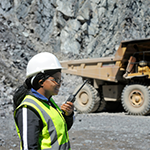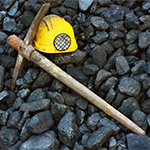The Rise of Women in Mining
Mining is no longer a man’s world. In South Africa alone, the number of women in mining has grown from just 11,000 two decades ago to over 70,000 today. Globally, women still represent only 10–15% of the mining workforce, but initiatives like Women in Mining South Africa (WiMSA) aim to change that. These efforts aren’t just about representation—diverse teams have shown better safety records and improved decision-making.
However, challenges remain. Worksites designed by and for men often lack the infrastructure to support women. From ill-fitting protective gear to a lack of private toilets, women face daily hurdles that impact their safety, dignity, and ability to thrive in the industry.
Sanitation Challenges in Mining Environments
Lack of Safe, Private Facilities
Historically, many mines offered no separate bathroom facilities for women. This lack of privacy can expose women to harassment or even violence. Inadequate sanitation also compromises health, particularly for menstruating women who need private, hygienic spaces.
Impact on Health and Well-being
Without access to clean toilets and proper changing facilities, women often avoid drinking water or delay bathroom visits. This leads to dehydration, urinary tract infections, and other health issues. In extreme cases, women are forced to use the bush due to the absence of any usable facility.
Regulatory Improvements
Recent changes in South African mining regulations now mandate adequate sanitary amenities for women. Guidelines call for additional female toilets in each work section, well-lit paths, and sanitary bins in bathrooms. This is a step forward, but implementation remains uneven.
Off-Grid Mines, On-Grid Problems
Remote mining camps face even greater sanitation challenges. Without access to municipal plumbing, many rely on pit latrines or chemical toilets. These are often unsanitary and inadequate, especially for female workers who may need facilities at night or in distant work areas.
The Bio Sewage Solution
What It Is
Bio Sewage Systems provides chemical-free, modular sewage treatment solutions ideal for off-grid mining operations. These systems mimic nature by using bacteria to treat wastewater, producing clean, odorless effluent that can be reused for irrigation or dust control.
Key Benefits
- Improved Hygiene: Flush toilets and handwashing stations replace unhygienic latrines.
- Enhanced Safety: Units can be placed close to work areas or dorms, reducing the need for risky trips.
- Women-Friendly Features: Private, lockable toilets with sanitary bins and optional emergency supplies.
- Environmental Protection: Treated water meets discharge standards and can be reused sustainably.
- Easy Installation: Modular units can be deployed quickly, even in harsh environments.
Aligning with ESG Goals
Social Impact
Safe and hygienic sanitation facilities support the well-being of all workers, particularly women. This aligns with social and governance aspects of ESG, showing a commitment to equality and worker dignity.
Environmental Sustainability
Bio Sewage Systems help mining companies manage water responsibly and prevent environmental contamination. These actions support SDG 6 (Clean Water and Sanitation) and improve ESG ratings.
Economic Value
Healthier, safer employees are more productive and less likely to leave. Inclusive infrastructure supports talent retention and creates a more welcoming work environment for women.
Conclusion
Empowering women in mining requires more than just recruitment targets. It means transforming workplaces to be safer and more inclusive. Clean, accessible sanitation is a fundamental part of this transformation.
By investing in off-grid, sustainable sewage systems, mining companies can support gender equality, meet ESG goals, and create healthier, more dignified worksites for all. A mine that values sanitation is a mine that values its people.






